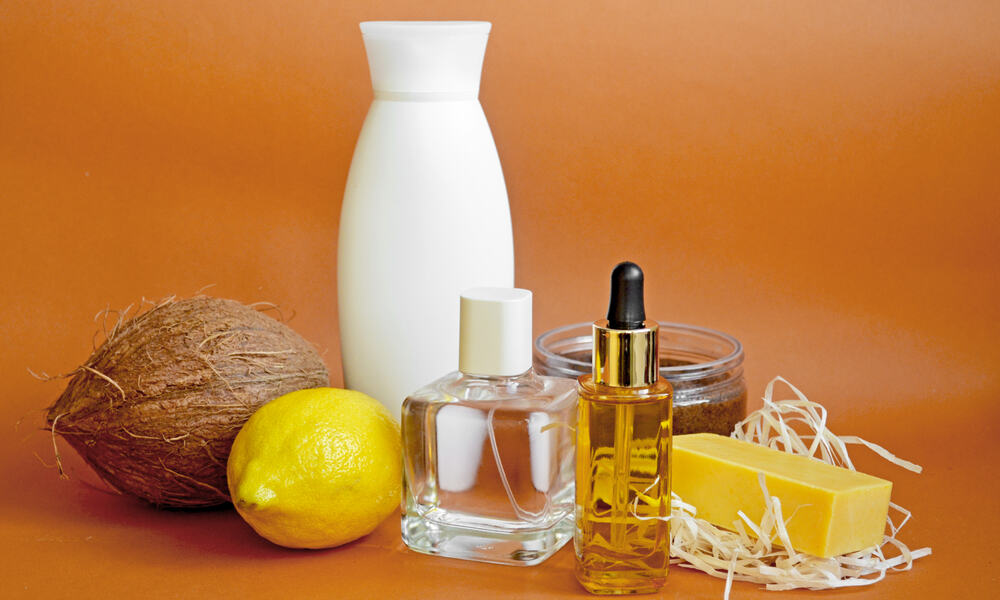Let’s be honest:
Humans can’t befriend insects.
By causing itchiness in all the wrong body parts, bugs make sure that we can’t have a moment of rest by their continuous action. Throw into the mix their love for warm weather – as that makes them hyperactive – and it’s time that you lubricate yourself with a bug repellent.
Hence the reason(s) why we decided to show you our bug spray recipes.
Natural and homemade, these homemade bug sprays won’t weigh heavily on your pockets either. What’s more, while they will keep insects at bay on one end – these homemade bug sprays will take care of your skin on the other, thereby presenting you with a win-win situation.
1. Witch Hazel Bug Spray
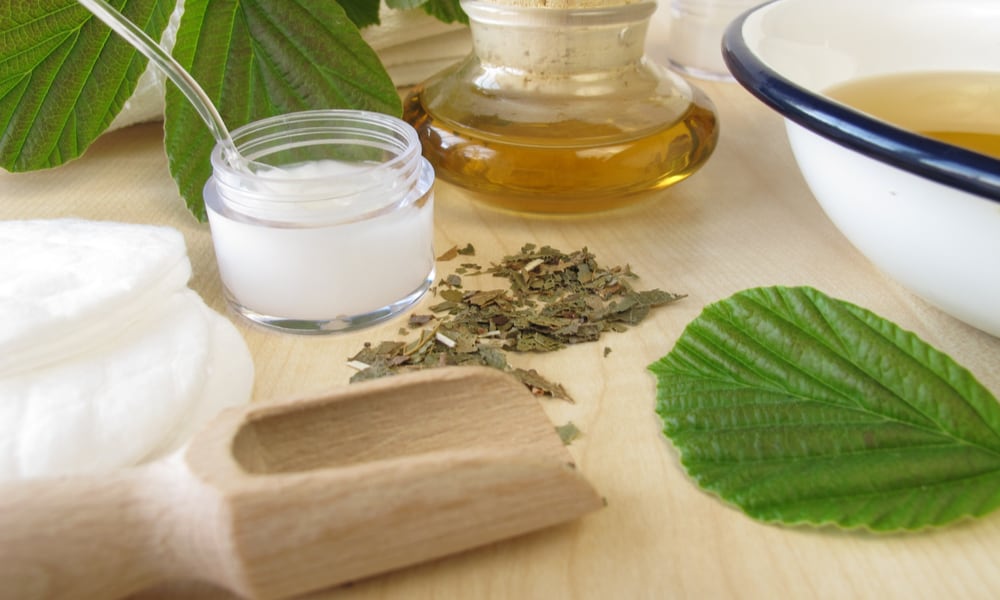
In addition to smelling great, this natural, homemade repellent works brilliantly. So you can apply it at all times – and not just before you go to bed. Also, with its great smell, people sitting around you won’t mind.
More importantly, the main component of this spray – witch hazel – is famous for the health benefits it provides to the skin. That includes help against skin sores, acne, redness, oily skin, and even eczema. On top of everything else, witch hazel can also help reduce the sensitivity of your skin.
Ingredients:
- Witch hazel (2 tablespoons)
- Almond oil (2 tablespoons)
- Vodka (1/2 teaspoon)
- Lavender essential oil (15 drops)
- Cedarwood essential oil (15 drops)
- Rosemary essential oil (15 drops)
- Spray bottle (8 oz)
How to Prepare:
- Mix everything apart from the essential oils
- Once you note that that the mixture has become homogenous, add the essential oils.
- Shake well before using the spray.
2. Apple Cider Vinegar Bug Spray
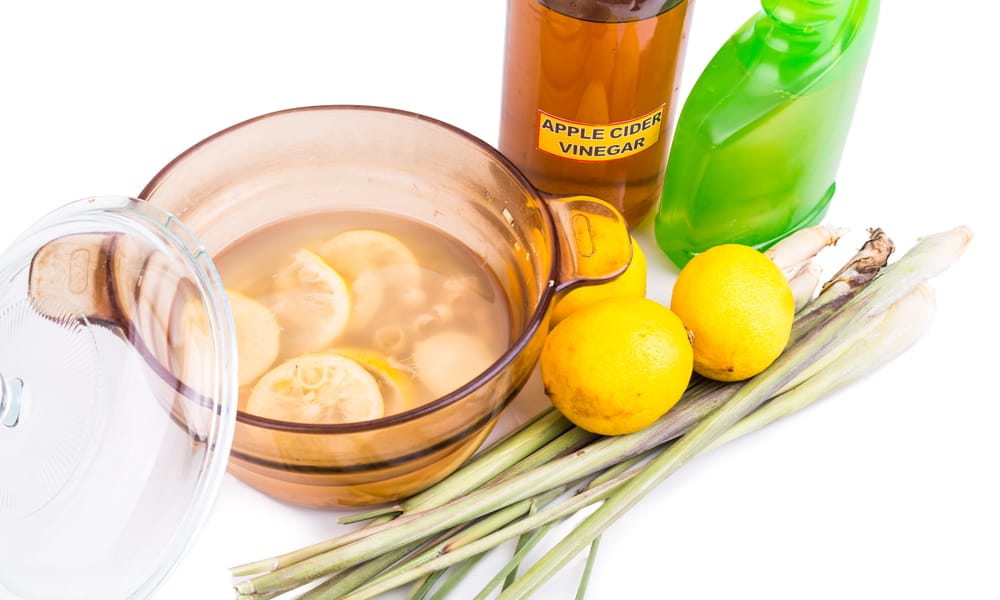
Apart from keeping insects at bay, this spray also provides a soothing action. So you can use it to cure acne, razor burn and sweating as well. And the presence of rosemary oil makes sure that people sitting beside you would enjoy its smell.
That said, it is apple cider vinegar which is the major reason why we vouch for this spray. Known for reducing the pH of our skin, it reduces oiliness, smoothens the skin and mitigates the appearance of fine lines. It also has beta-carotene which helps prevent future skin damage.
Ingredients:
- Apple cider vinegar (1/2 cup)
- Witch Hazel (1/2 cup)
- Eucalyptus (40 drops)
- Lemongrass (40 drops)
- Tea Tree oil (40 drops)
- Rosemary (40 drops)
- Spray bottle (8 oz)
How to Prepare:
- Take the empty spray bottle.
- Add the designated amounts of apple cider vinegar and witch hazel
- Follow up by adding required amounts of all the other ingredients.
- Shake the bottle well before using the spray.
3. Rubbing alcohol Spray

Also known as the vegetable glycerin spray, this spray has analgesic properties as well. That means it won’t only keep insects at bay but might also help cure insect bite. Though you might have to spend a considerable amount as its ingredients list is quite exhaustive.
In addition to keeping normal insects at bay, experts also credit at least one ingredient of this repellent – lemon eucalyptus – for keeping those mosquitoes which carry Zika virus away from you for at least 7 hours.
Ingredients:
- Rubbing alcohol (1 tablespoon)
- Witch hazel (1/2 cup)
- Vegetable glycerin (1 teaspoon)
- Vinegar (1/2 cup)
- Rosemary essential oil (10 drops)
- Lavender essential oil (20 drops)
- Citronella essential oil (30 drops)
- Geranium essential oil (30 drops)
- Lemon eucalyptus essential oil (20 drops)
- Spray bottle (8 oz.)
How to Prepare:
- Take the empty spray bottle.
- Prepare a mixture of all the essential oils, and add it to the empty bottle
- Add alcohol and immediately shake the bottle to make a homogenous mixture
- Once you see that the mixture has achieved homogeneity, add witch hazel and shake.
- Finally, add vegetable glycerin which will keep everything added before in a mixed state.
4. Lavender Vanilla Spray
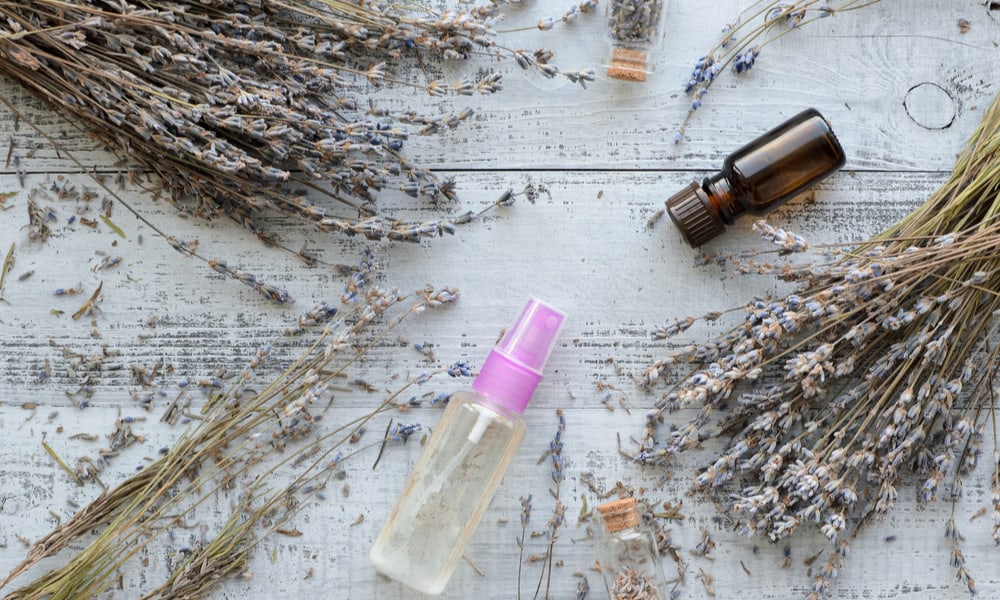
The Lavender Vanilla Spray works great and smells even better. You can even use it as an alternative to DEET. All of its ingredients mentioned below can easily be found from a mid-sized grocery store. So you won’t have to spend much to purchase its ingredients.
On top of everything else, this spray contains lemon eucalyptus – an ingredient which experts credit for keeping those mosquitoes away which carry Zika virus. That means if you’re going to such a country where this virus has played havoc – or you live there – this spray gives you one extra reason to try it.
Ingredients:
- Lavender Essential oil (15 drops)
- Vanilla extract (3-4 tablespoons)
- Lemon juice (3-4 tablespoons)
- Distilled water
How to Prepare:
- Take the empty spray bottle.
- Fill it with a mixture of vanilla, lavender and lemon juice
- Once all three substances are mixed, add 1-2 teaspoons of distilled water on top
- Shake the bottle before using it
5. Four Thieves Vinegar Spray
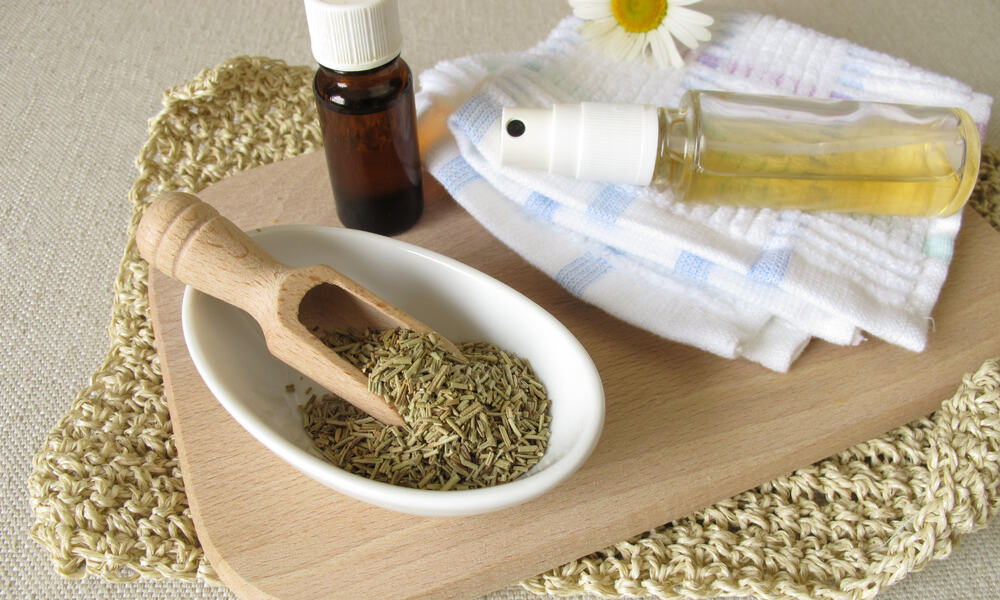
Legend has it that this mixture was developed by a cabal of medieval thieves who had to save themselves from contracting the plague of the dead (or dying) that they were robbing. It might be a myth but it’s still a powerful one at that.
Also, while we can’t verify the veracity of this myth, one thing which we can vouch for is that this spray smells brilliant. And that too while keeping the likes of black flies and mosquitoes from troubling you. Here’s how you can prepare it.
Ingredients:
- Freshly chopped lavender flowers (2 tablespoons)
- Freshly chopped rosemary (2 tablespoons)
- Freshly chopped mint (2 tablespoons)
- Freshly chopped sage (2 tablespoons)
- Freshly chopped anise hyssop (2 tablespoons)
- Freshly chopped marjoram (2 tablespoons)
- Peeled and crushed garlic (4 cloves)
- Apple cider vinegar (1-quart)
How to Prepare:
- Combine all the herbs (the first six items on the list) and mix them with garlic in a mason jar.
- Add some vinegar on top and let the mixture steep for a week
- Once this period is over, distill the mixture through a mesh sieve to separate vinegar
- Collect the resulting mixture in a spray bottle.
6. Water-based Insect Repellent spray
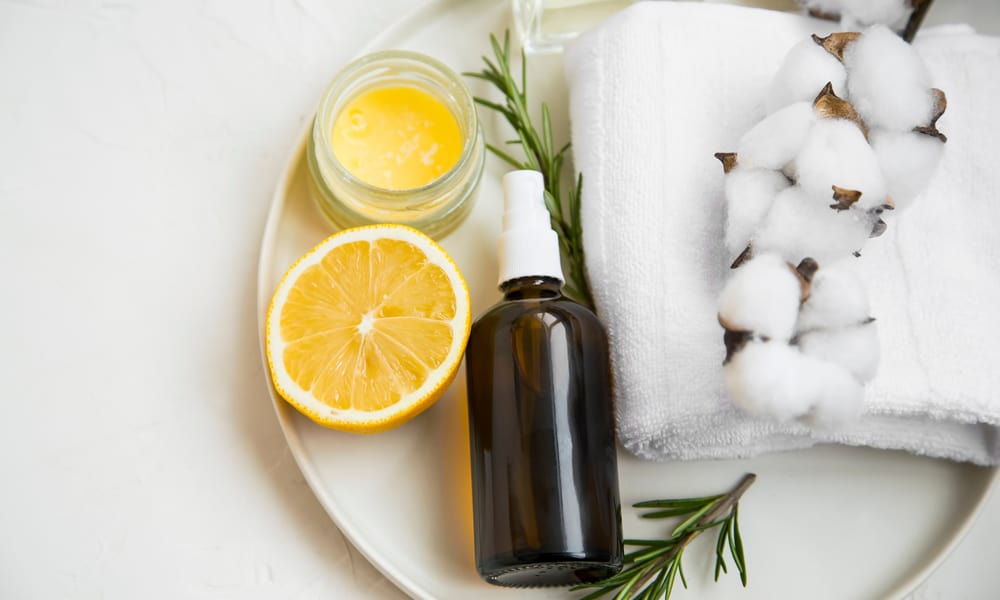
In contrast to other sprays on this review, this one is totally water-based. That means that even if you have allergies or skin-related problems, you still might benefit from it. That’s because the presence of water gives it a natural touch which won’t trouble your skin.
That said, the fact that it won’t trouble your skin doesn’t mean that this spray would adopt the same attitude towards bugs. Instead, as we found out after applying it, it has all the properties to make bugs hate it. Also, if you don’t like purchasing distilled water, you can simply boil tap water and use it.
Ingredients:
- Freshly extracted lemon juice (4 tablespoons)
- Lavender essential oil (15 drops)
- Vanilla extract (4 tablespoons)
- Distilled water (2 cups)
How to Prepare:
- Combine all the ingredients in a spray bottle
- Close the bottle’s opening with a cap
- Shake the bottle well before using it
7. Citronella-Cedar Bug Spray
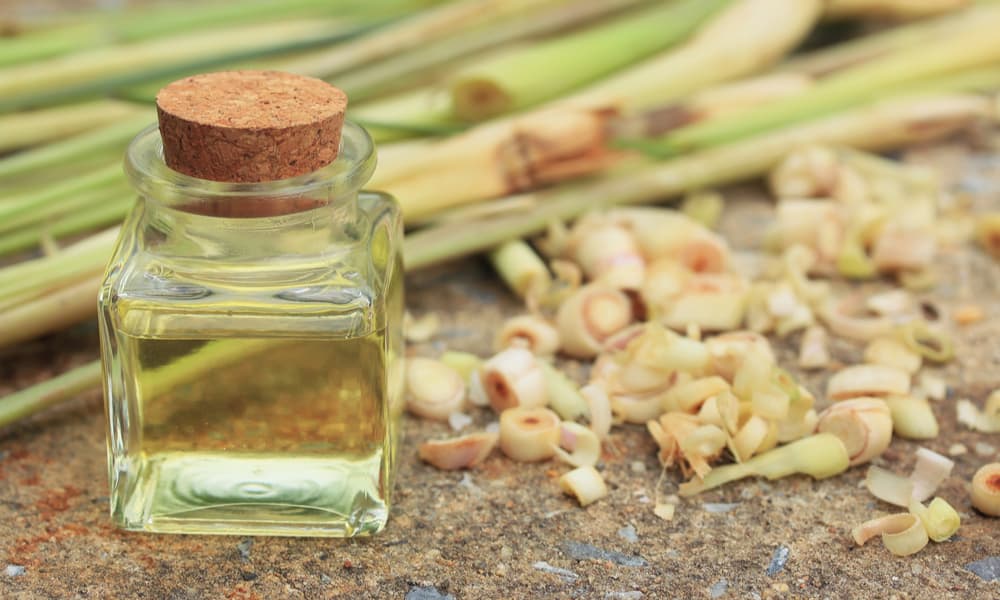
In case you were wondering, not all homemade bug sprays in this review smell like deodorant. Some of them – like the Citronella-Cedar spray – repel mosquitoes with their overpowering odor. So we recommend that you only use this concoction when you’re outdoors.
Provided you do that, it won’t matter whether you’re roaming in a jungle or trying to trek the Rocky Mountains – as the odor of this spray would be enough to keep your skin shielded from even the most vicious insects out there.
Ingredients:
- Citronella essential oil (10 drops)
- Eucalyptus essential oil (10 drops)
- Cedar essential oil (5 drops)
- Jojoba oil (4 tablespoons)
- Spray bottle (8oz.)
How to Prepare:
- Take the empty bottle and pour into it the designated amount of citronella essential oil
- Once the oil has settled, add both the cedar as well as eucalyptus essential oils at once
- Follow up by adding jojoba oil. Leave the mixture still for 10 minutes for it to mix freely
- Before using the mixture, shake the bottle vigorously.
8. Dried herbs Bug Spray

Who says herbs are only there to provide protection against more serious diseases? Provided you have – or can find – the likes of lavender, peppermint or catnip herbs, this recipe will tell you how you could use them to create a potent insect repellent spray.
To make this homemade bug spray last longer, make sure you keep it in a cool place. Otherwise, with it containing ingredients like rubbing alcohol, it won’t be able to last more than a few days in a hot, humid environment. So it is imperative that you keep it away from the sun.
Ingredients:
- Water (1 cup)
- Rubbing alcohol (1 cup)
- Combination of peppermint and lavender (3-4 tablespoon)
- Dried cloves (2 pcs)
- Spray bottle (8oz.)
How to Prepare:
- Take an empty pan. Fill it with cloves, herbs, and water.
- Bring the mixture to a boil.
- Once you can see bubbles on its surface, transfer the mixture into a container.
- Cover the container and give the mixture some time to cool completely
- Once the concoction has cooled down, filter the herbs using a sieve.
- In the mixture that remained behind, add rubbing alcohol.
- Store the resulting bug spray in a refrigerator or any other cool place
9. Beeswax Bug Spray
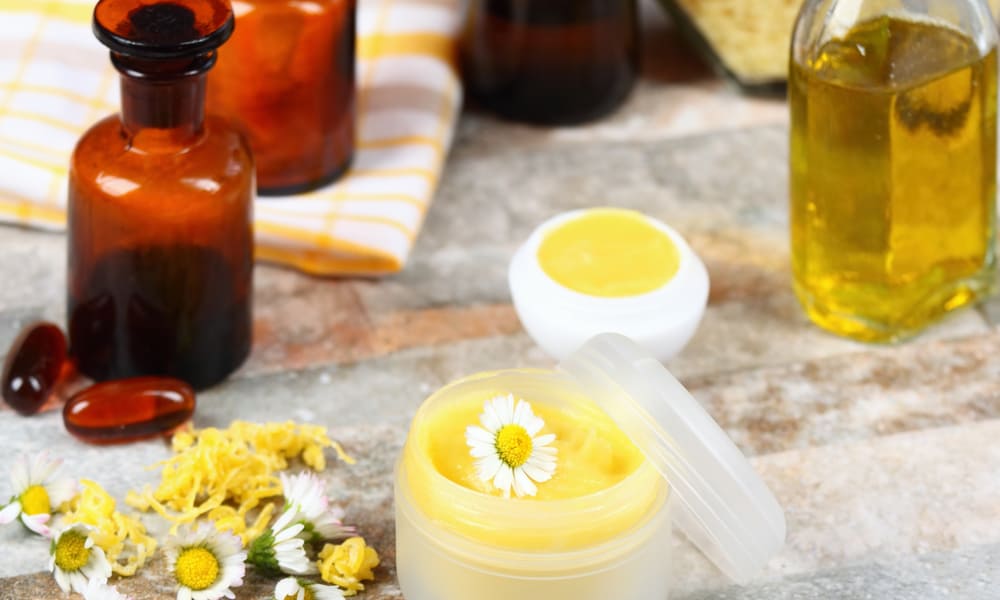
Rich with cocoa, beeswax and coconut oil, the Beeswax bug spray is a smooth insect repelling balm which is also great for the skin. It contains coconut oil which is famous for its anti-fungal and anti-bacterial properties. The presence of Vitamin E, meanwhile, helps coconut oil in smoothening your skin.
Furthermore, this spray contains lemongrass whose liquid form contains skin healing properties. Though the main ingredient of this spray has to be its beeswax pastilles. Found in creams, waxes and even deodorants, beeswax has anti-inflammatory as well as anti-bacterial properties.
Ingredients:
- Beeswax Pastilles (1/4 cup and 2 tablespoons)
- Coconut oil (1/4 cup)
- Cocoa butter (1/4 cup and 2 tablespoons)
- Castor oil (2 tablespoons)
- Citronella, lemon eucalyptus essential oil and lemongrass (15 drops each)
- Geranium and peppermint essential oil (5 drops each)
How to Prepare:
- Take an empty saucepan and fill it with castor oil, coconut oil, cocoa butter, and beeswax.
- Place the saucepan over a slow-burner and melt all its ingredients while applying constant stirring
- Once the ingredients have melted, remove them from heat.
- Leave the saucepan for the time it will require to completely cool down
- Add essential oils and transfer the resulting concoction to container
10. Castile Soap Soup
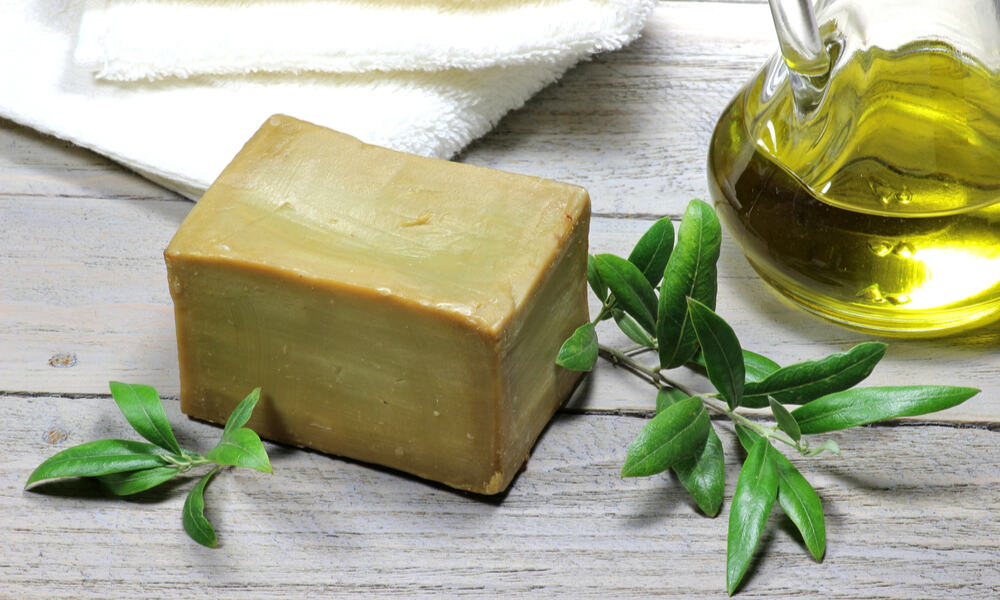
Experts tell us that when it comes to providing natural protection against aging signs, neem oil is highly beneficial. It is a bit fortunate then that the castile soap spray contains neem oil as one of its primary ingredients.
Ingredients:
- Liquid castile soap (10 teaspoons)
- Neem oil (1 teaspoon)
- Distilled water (4 cups)
- Spray bottle
How to Prepare:
- Prepare a mixture of liquid castile soap and neem oil in a container.
- Stir the mixture to obtain a homogenous composition
- Add 4 cups of distilled water to the mixture. If distilled water isn’t available, you can also use boiled tap water
- Transfer the mixture in a spray bottle, shake and apply.
Conclusion
Majority of the commercial bug repellents that are available on the market contain chemicals which harm both your body and the environment. It seems a no-brainer then that we switch to their natural and homemade counterparts. Doing that will give you peace of mind as you’d know what’s inside the repellent that you’re using.
